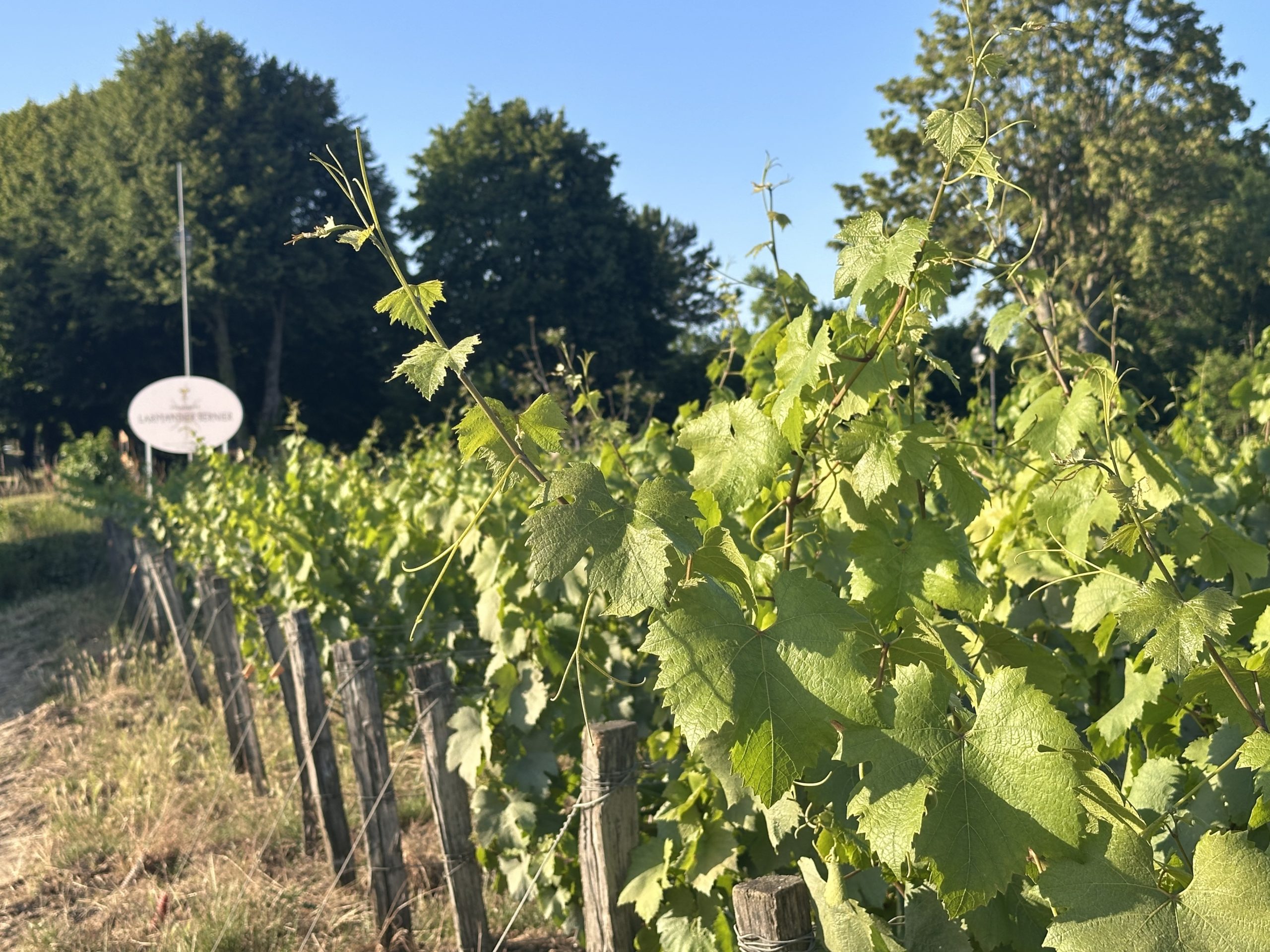Saison 2025
After a year and a half of almost non-stop rain, the sun finally returned to Champagne at the end of March. And it’s still shining! In fact, we’ve barely seen a drop of rain since then — and now we find ourselves in the ironic position of actually hoping for rain.
This dry spell has helped us keep the vegetation under control and, so far, we have experienced virtually no risk of disease. But our young vines are struggling with the lack of water — they simply don’t have the deep root systems of our older ones. This year, we planted 30 ares (about 3,000 vines), and if we want to save them, we have to water — something we’ve never had to do before. Our parents certainly never did. Spring and summer rains used to be enough. Of course, we use measured amounts of water, and we don’t irrigate “adult” vines — this is not permitted under the Champagne appellation. Irrigation is strictly limited to the first two years after planting, when the vines are not yet producing.
Thankfully, the water tables are full and the chalky soil is doing its job as a natural regulator. Our established vines are coping much better, drawing on the cool, steady moisture stored deep in the chalk.
So far, the 2025 season is off to a good start, and we’re enjoying this calmer weather after the challenges of 2023 and 2024, which really tested our nerves and our harvests.
What does it mean to be a grower in Champagne
What sets a grower apart from a brand? Is it the number of bottles produced? Whether grapes are purchased or only estate-grown? The know-how?
Let’s rewind a bit. Back in 1988, when Sophie and I took over the family estate, the Champagne world was dominated by a few big names — and then there were the “cheap little champagnes.” We were small (just 9 hectares), but lucky to be in the Côte des Blancs, with beautiful terroirs and a big ambition: to make great wines. We believed that our size and our decision not to buy grapes were strengths. It allowed us to go all the way in our approach, leaving no detail to chance. So, against the grain, we focused on limiting yields, harvesting fully ripe grapes, and we chose organic and biodynamic farming. Organic wasn’t trendy in the 90s, but it felt like the right path to craft wines with real character. Back then, health and environmental concerns weren’t front and center — but of course, we were already sensitive to those benefits too.
Then came the rise of the “grower champagne” movement — thanks in part to Terry Theise in the U.S., one of the first to talk about (and import) grower champagnes.
Fast forward nearly 40 years… The landscape has changed dramatically.
Growers are now in vogue. Even the big houses are adjusting their messaging to highlight a “grower image” and an environmental respectability. Many small estates have popped up — some are true gems, but it’s up to each person to explore and discover. Because despite the romantic image of the grower, small isn’t always beautiful 😉
What we believe is key: control over the vineyard, organic certification, the grower’s personal involvement, and of course, the place of origin of the grapes (the terroir).
Today, we farm around 20 hectares and still don’t buy any grapes. This size suits us well — with our two sons, we can stay hands-on with every decision and every little gesture, both in the vineyard and in the cellar. That control brings responsibility, but also freedom: we make wines the way we love them.
And that’s why we feel right at home in our grower’s shoes — and so do our sons, Arthur and Georges!

